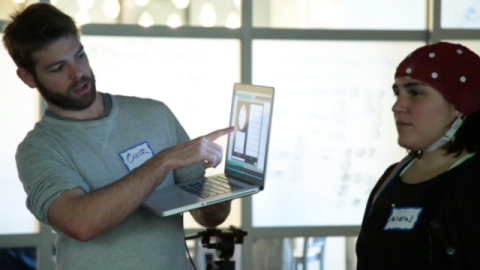The New Project Set to Make EEG, Brain Computer Interfacing and 3D Printing History

It’s an impressive project that can push the frontiers in one field, a new crowdfunded project looks set to make a splash in three.
Until now, the research grade EEG equipment that sophisticated brain computer interfaces depend on have costed thousands if not tens of thousands of dollars. Over recent years we’ve seen a range of consumer brain computer interface products come on to the market amid massive fanfare. The devices aim to allow the user to control or communicate through a computer using their brain waves recorded through electrodes placed on the scalp. The devices that have so far appeared on the consumer market have a few things in common. Proprietary software places restrictions on developers and limits access to raw data for researchers. Even when data is accessible, such systems have proved unhelpful to researchers due to the fixed and limited electrode locations that don’t match up with the internationally recognised system researchers use to record electrode placement.
A group based in New York is trying to change that with an open sourced EEG unit which is already nearly funded on Kickstarter that will be able to be used with existing open sourced BCI applications like BrainBay orOpenVibe. The project probably isn’t suitable for amateurs just yet, but if you’ve got some background in EEG, coding or ideally both then this project could be a lot of fun!

The beauty of this project is that, in the spirit of open science, no matter if the initial iteration soars or crashes, researchers, developers and anyone else for that matter can take the designs, change them and make them better.
Open sourced systems are also a major bonus for skeptics. Without access to the data underpinning the workings of a BCI system, it can be difficult to say for sure that a primitive BCI device is anything more than a glorified divining rod. Providing access to the data will allow users to really be sure it is their brain – and not the subtle twitches of their eyebrows for example, that are controlling what is happening on their screen.
I for one welcome our new BCI overlords!
To keep up to date with this blog follow Neurobonkers on Twitter, Facebook, RSS or join the mailing list.





